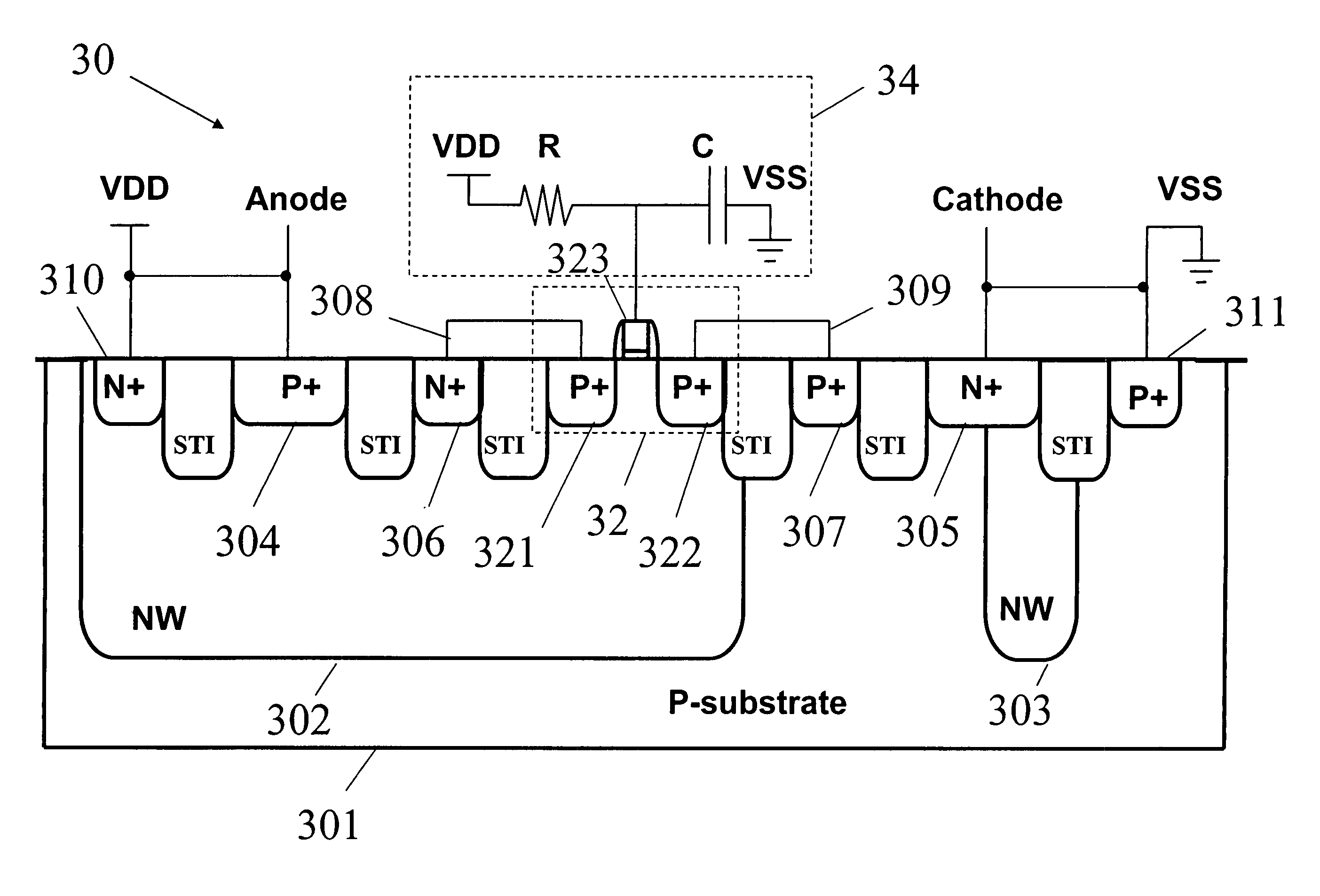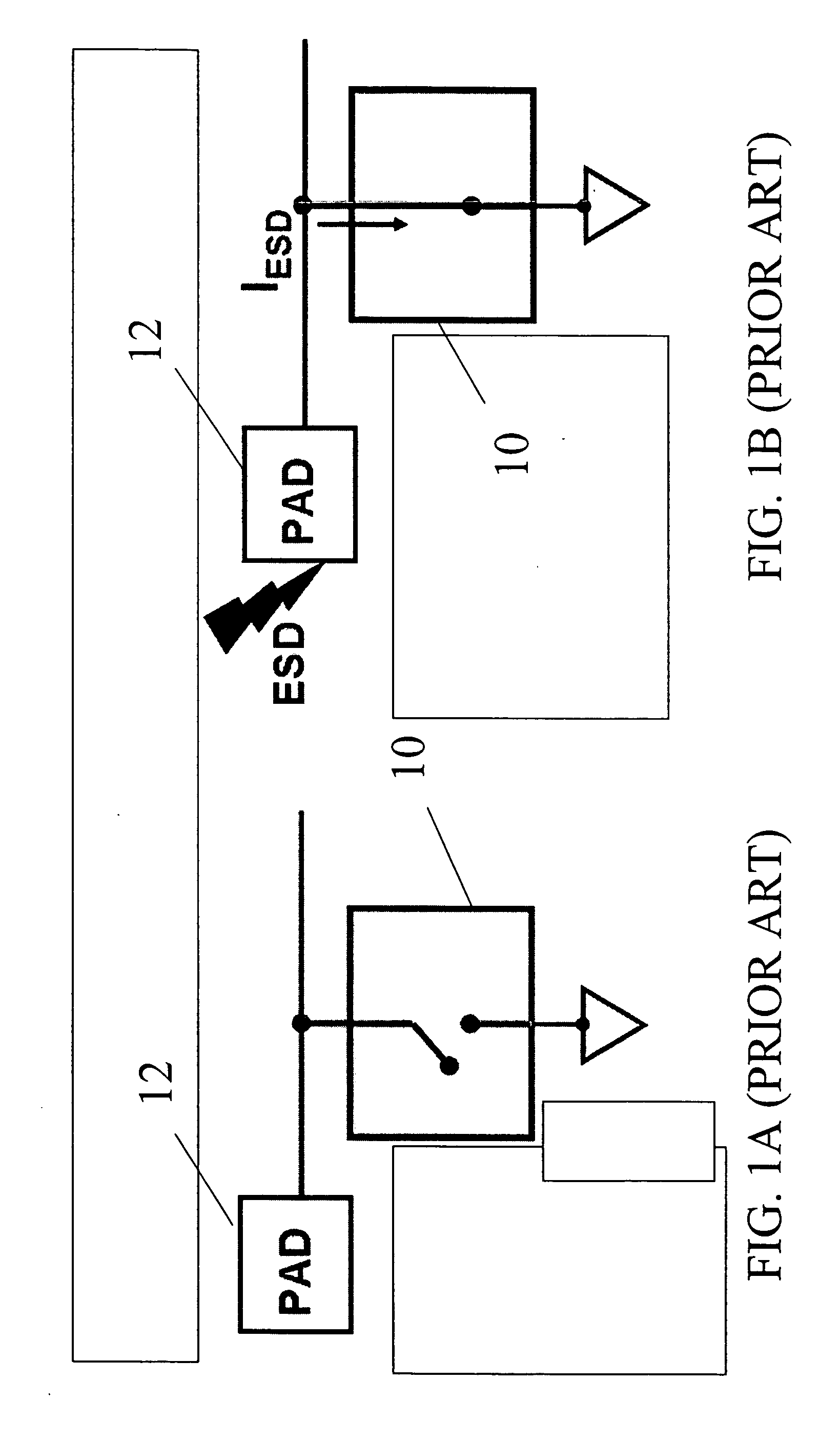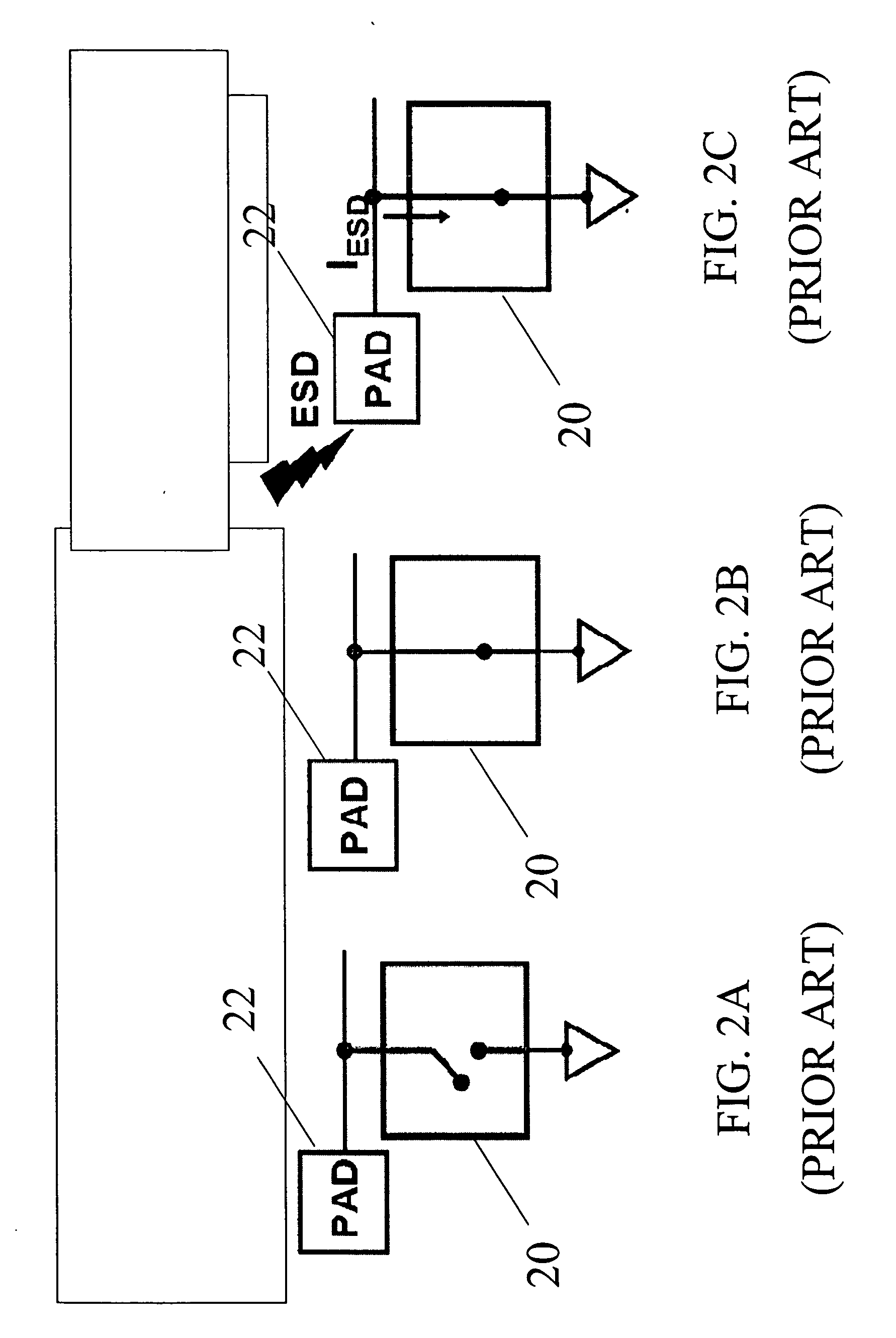Initial-on SCR device for on-chip ESD protection
a technology of esd protection and scr, which is applied in the direction of semiconductor devices, semiconductor/solid-state device details, circuit arrangements, etc., can solve the problems of esd damage becoming the main reliability issue, esd protection design may no longer be able to effectively protect the core circuit against an esd event, and damage to the ic during installation of the i
- Summary
- Abstract
- Description
- Claims
- Application Information
AI Technical Summary
Benefits of technology
Problems solved by technology
Method used
Image
Examples
Embodiment Construction
[0036] The present invention provides an initial-on silicon controlled rectifier (“SCR”) that has a relatively low trigger voltage and a relatively fast turn-on speed for on-chip electrostatic discharge (“ESD”) protection. Furthermore, the initial-on SCR device has a holding voltage high enough to prevent latch-up. The initial-on SCR device may be implemented by PMOS-triggered technique without modifying general CMOS processes. For example, the initial-on SCR can be realized in a 0.25-μm CMOS process.
[0037]FIG. 3A is a cross-sectional view of an SCR device 30 in accordance with one embodiment of the present invention. Referring to FIG. 3A, a PMOS transistor 32 is embedded in SCR device 30 to assume an initial-on function together with an ESD detection circuit 34 for ESD protection. SCR device 30 includes a p-type substrate 301, a first n-type well (N-well) region 302 formed in substrate 301, a heavily doped p-type (P+) region 304 formed in N-well 302 to serve as an anode, and a hea...
PUM
 Login to View More
Login to View More Abstract
Description
Claims
Application Information
 Login to View More
Login to View More - R&D
- Intellectual Property
- Life Sciences
- Materials
- Tech Scout
- Unparalleled Data Quality
- Higher Quality Content
- 60% Fewer Hallucinations
Browse by: Latest US Patents, China's latest patents, Technical Efficacy Thesaurus, Application Domain, Technology Topic, Popular Technical Reports.
© 2025 PatSnap. All rights reserved.Legal|Privacy policy|Modern Slavery Act Transparency Statement|Sitemap|About US| Contact US: help@patsnap.com



